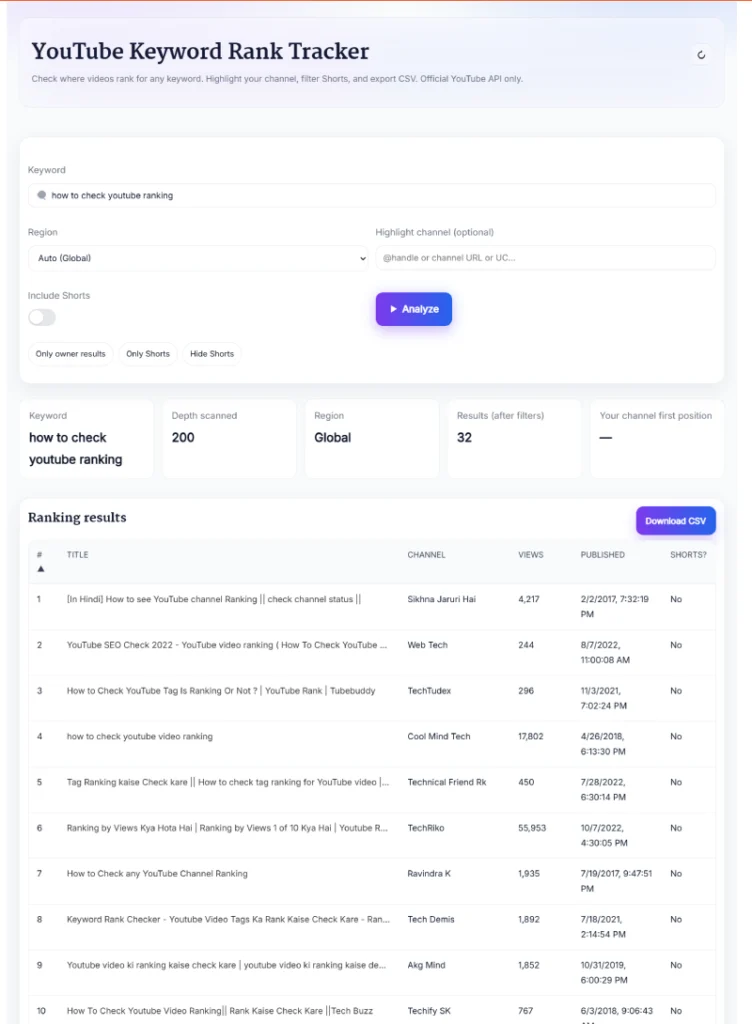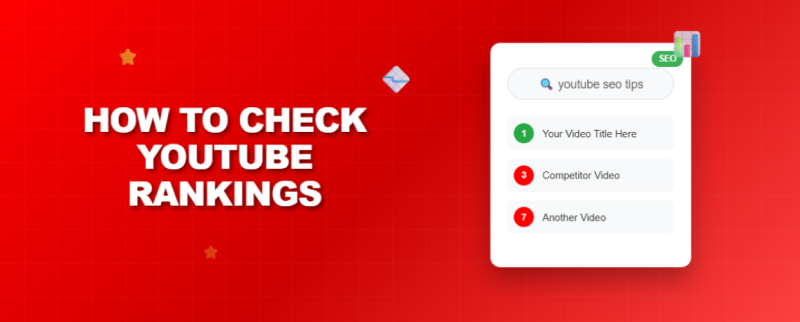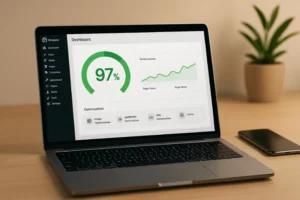You can check where a video ranks by running an incognito search on YouTube for your target keyword, counting your position inside the Videos tab, then confirming the result with a lightweight checker so you don’t get fooled by personalization. If you want the fast route, use this free tool and get a clean position in seconds: check your ranking now.
What “YouTube ranking” really means
When creators say “rank,” they usually mean the position a video holds for a specific keyword inside YouTube Search. That position isn’t always the same for everyone. It shifts based on country, language, watch history, and even which tab you’re viewing. YouTube has tabs like Top, Videos, Shorts, Channels, and Playlists. If you want to measure classic SEO style ranking, stick to the Videos tab, then count your result among standard video listings. Yeah, it sounds basic, but this one switch fixes half of the confusion I see in DMs.
The fast manual method using YouTube search
Here’s a simple, no-fuss workflow I use when a client pings me and says, “Where do we rank right now?”
- Open a private or incognito window.
- Go to youtube.com and switch to the correct country if you’re targeting a specific market.
- Type your exact keyword. Example: “how to edit reels on capcut” instead of a loose version like “capcut reels edits.”
- Hit Enter, then click the Videos tab.
- Scroll through results and count positions manually. Ignore ads, shelves like “Shorts,” and playlists if your goal is video search ranking.
- Note the position you find.
- Repeat for the next most important market. Rankings often differ between India, the US, and the UK.
Micro-example: last week I checked “youtube intro ideas” for a tutorial. In incognito, on the Videos tab, the client’s video was at position 17 in India and 9 in the US. Same video, same keyword, totally different story. This is why you always confirm per country.
Why your rank looks different on your phone
Two quick culprits: personalization and query variants. If you’re logged in, YouTube loves to boost channels you’ve watched. Also, small changes like plural vs singular or adding a brand word can reshuffle the page. By the way, time filters change things too. “This month” vs “Any time” can move results around. If you’re reporting ranks to a client or team, agree on one fixed method so you aren’t comparing apples to playlists.
Use a checker when you need a clean, repeatable result
Manual checks are fine for a spot check. But if you want something repeatable, use a tool. It gives you a neutral snapshot and a position number you can put in a sheet without arguing over someone’s watch history.
Here’s how I run it with the free checker I recommend:
- Open the tool: YouTube Keyword Rank Checker.
- Enter your exact target keyword in the main input.
- Paste your video URL or ID in the optional field if you want the tool to highlight your result.
- Pick the target country. If you’re India-first, choose India. If you publish globally, run a few key markets.
- Click the button to check. The tool returns your current position, plus a snapshot of the top results so you can see who you’re competing against right now.

UI tip from experience: keep your keyword tight. If your video is optimized for “how to check youtube ranking,” don’t test “how to check rankings on youtube” first. Start with the exact phrase your title targets, then branch into close variations.
How to check youtube ranking across multiple keywords
Single-keyword checks are helpful, but videos usually rank for clusters. Build a shortlist of 5 to 10 variations:
- Exact match: “how to check youtube ranking”
- Close variant: “how to check youtube rankings”
- Intent twist: “check youtube ranking free”
- Tool-based: “youtube ranking checker”
- Use case: “check youtube ranking for a video”
Now run each one. Keep a simple sheet with columns like Date, Country, Keyword, Position, Notes. I log quick notes such as “new thumbnail A/B started” or “changed first 60 chars of title.” When the rank moves, you’ll know why.
How to read the results like a pro
Ranking is only one signal. Position 8 with a 12 percent click rate and long watch time can beat position 3 with weak retention. Still, rank trends are gold for diagnosing SEO changes. If you go from 28 to 14 after a title tweak, you’re warming up. If you climb into the top 10 and hold, it’s usually a title plus thumbnail plus early engagement combo doing the heavy lifting.
Watch for three patterns:
- Climbing but unstable: you pop into the top 15, then drop back. Keep pushing session starts. Share to your warm audience and pin a strong comment.
- Stable but stuck: you sit at 11 to 13. Improve the first 30 seconds so audience retention doesn’t dip. Raise CTR with a clearer promise in the title.
- Sliding after a spike: you launched hot, then cooled. Refresh the thumbnail and add a new hook in the description intro. Sometimes a chapter update helps re-crawl context.
Quick wins to improve ranking fast
I’ve tested these small changes on tutorials, reviews, and listicles. They pay off.
- Put the core keyword near the start of the title in natural language.
- Open your description with a one-sentence promise that repeats the idea in human words, not keyword spam.
- Add 5 to 10 tags that mirror real search phrasing. Tags don’t move mountains, but they clarify context.
- Add chapters. Use simple, scannable labels. Chapters help both viewers and the algorithm figure out relevance.
- Include captions. Accessibility aside, captions boost text signals and keep viewers watching in quiet settings.
- Nail your first 30 seconds. Show the outcome quickly, then teach. Viewers decide fast.
- Encourage one micro action. Heart a helpful comment and pin it. That first wave of engagement is a lift.
- Update old winners. Fresh thumbnail, tighter intro, small title polish. I’ve pushed videos from rank 12 to 5 doing just that.
Real example: from 38 to top 3
One creator I worked with published a tutorial that sat around position 38 for weeks. We did three things:
- Rewrote the title to front-load the core phrase.
- Swapped the thumbnail to a close-up with a big visible outcome.
- Added chapters with clear benefits.
Within 10 days, the video landed between positions 3 and 5 depending on country. CTR rose from 3.4 percent to 6.1 percent, and average view duration climbed by 27 seconds. The video didn’t need a full re-edit. It needed clarity.
How to check youtube ranking for Shorts
Shorts ranking lives inside its own universe. If your goal is to rank in standard search, upload as a regular video. If you want discovery inside Shorts, track performance via retention and replays rather than classic rank. For keywords that support Shorts, you can still check placement on the Videos tab, but expect volatility. I treat Shorts rank as directional, not a KPI.
How often should you track
Daily for the first week after publish, then weekly for a month, then monthly. If you’re optimizing multiple videos, batch your checks every Monday. Add a column for notes so future you remembers what changed. And yeah, take screenshots when you break into the top 10. Those little wins keep the team motivated.
Troubleshooting weird rank jumps
- Your result shows in Top but not in Videos. Click into Videos and measure there for consistency.
- Your teammate sees a different rank. Confirm their country and whether they were logged in.
- You rank for the plural but not the singular. Adjust title phrasing or add a supporting keyword in the description opening line.
- Rankings yo-yo after a thumbnail test. Give experiments a few days. Avoid changing title and thumbnail at the same time unless you’re fixing a clear mismatch.
Putting it all together with a simple routine
Here’s the routine I share with clients who want a clean, repeatable process for how to check youtube ranking and actually improve it:
- Before you publish, choose one main keyword and two backups.
- Launch with a thumbnail that shows the end result, not a vague concept.
- On day one, run incognito checks and log your position.
- Confirm with the tool snapshot so you’re not biased by history. Use this link to run a quick rank check.
- If you’re outside the top 20, tighten your title and refresh the thumbnail.
- Track daily for a week. Note any changes to title, thumbnail, or chapters.
- After a month, decide if the video needs a mini relaunch or a new video aimed at the backup keyword.
FAQ
What is the right keyword length to target?
Short phrases are competitive. Three to five words usually balance search volume with intent clarity. For example, “how to check youtube ranking” is crystal clear and converts well into tutorial views.
Do tags still matter?
They’re not magic, but they help disambiguate topics. Use natural phrasing that mirrors how real people search. Skip tag stuffing.
Can I rank without a huge channel?
Yes. Tight titles, relevant topics, and strong first-30-second retention win. Smaller channels rank all the time for specific how-to queries.
Should I localize titles?
If you serve multiple regions, test localized titles or subtitles. Start with your highest-opportunity market, then expand.




